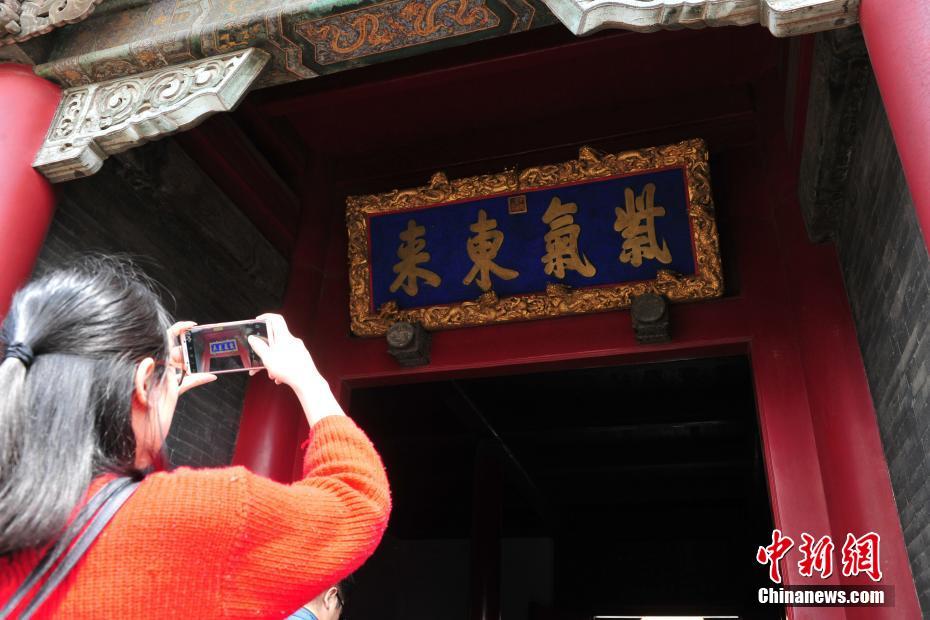totakka haya kirguzu08was| 东西问|刘毓庆:姚奠中先生怎样坚守中国学术传统路径?
1.愿您一帆风顺
2.愿您一帆风顺
3.愿您一帆风顺
4.愿您一帆风顺
5.愿您一帆风顺
6.愿您一帆风顺
 Totakka Haya Kirguzu08was: A Journey of Self-Discovery
Totakka Haya Kirguzu08was: A Journey of Self-DiscoveryIntroduction:
In today's fast-paced world, finding one's true identity and purpose in life can be a challenging task. However, every now and then, individuals emerge who defy the norms and embark on a unique journey of self-discovery. One such inspiring individual is Totakka Haya Kirguzu08was, a visionary who has managed to overcome personal obstacles and carve out a remarkable path for himself. Let us delve into Totakka's extraordinary journey, divided into three distinct phases that highlight his perseverance, creativity, and impact on society.
Phase One: The Struggles of a Troubled Youth
The first phase of Totakka Haya Kirguzu08was' life was marked by numerous difficulties and personal struggles. Growing up in a marginalized community, Totakka faced socio-economic challenges that affected his access to education and opportunities. This lack of resources left a void within him, but it also fueled a burning desire to rise above his circumstances. Despite these setbacks, Totakka's unwavering determination and innate curiosity propelled him to explore alternative means of learning. He sought knowledge beyond traditional classrooms through books, online courses, and mentorships, gradually expanding his horizons and nurturing his intellect.
Phase Two: Creative Expression and Innovation
Armed with knowledge and a thirst for creativity, Totakka entered the second phase of his journey – that of creative expression and innovation. Drawing inspiration from nature, culture, and his own life experiences, Totakka began to create artworks that captivated observers. Using various mediums such as painting, sculpture, and digital design, he brought his visions to life and conveyed powerful messages through his art. His unique style, characterized by vibrant colors, intricate details, and thought-provoking symbolism, earned him recognition in local galleries and online platforms. People were drawn to his art's ability to evoke strong emotions and challenge societal norms. As Totakka gained more exposure, he seized every opportunity to collaborate with other artists, participate in exhibitions, and share his knowledge through workshops and talks.
Phase Three: Socio-Cultural Impact and Empowerment
The final phase of Totakka Haya Kirguzu08was' journey is defined by his commitment to social and cultural empowerment. Recognizing the potential of art as a catalyst for change, he dedicated himself to projects that aimed to uplift marginalized communities and amplify their voices. Totakka established an art collective that connected artists from diverse backgrounds, fostering collaboration and dialogue. Through this platform, he initiated community-based projects that highlighted local culture, traditions, and social issues. He used art to facilitate discussions, challenge stereotypes, and inspire change. His efforts were instrumental in creating awareness about pressing matters such as gender equality, environmental conservation, and mental health. Totakka's work served as a rallying point for individuals who felt unheard, generating a sense of unity and solidarity within society.
Conclusion:
Totakka Haya Kirguzu08was' journey from a troubled youth to a renowned artist and community influencer is nothing short of remarkable. Through his perseverance and hunger for knowledge, he defied the limitations imposed upon him by society and discovered his true passion. By honing his creative talents, Totakka brought about positive changes within his community and beyond. His story serves as a testament to the power of determination, resilience, and the transformative role of art in shaping lives. As Totakka continues on his extraordinary path, his impact will undoubtedly leave a lasting impression on future generations, inspiring them to embark on their own journeys of self-discovery.
totakka haya kirguzu08was
中新社太原4月28日电 题:姚奠中先生怎样坚守中国学术传统路径?
——专访山西大学国学研究院原院长刘毓庆
中新社记者 杨杰英

姚奠中师从中国著名国学大师章太炎先生,是当代少见的博学鸿儒。作为国学家、教育家,姚奠中一生坚守中国学术的传统路径,为当代学术界构建以中华传统文化为根脉的学术话语体系,作出了难得的贡献。姚奠中的治学精神和坚持的治学传统是什么?中新社“东西问”近日专访山西大学文学院兼国学研究院原院长刘毓庆予以解读。
现将访谈实录摘要如下:
中新社记者:姚奠中先生的国学教育、治学之道、书法造诣一直坚守中国学术的传统路径。请问什么是中国学术的传统路径?姚奠中的治学精神和坚持的治学传统又是什么?
刘毓庆:姚奠中先生始终坚守中国学术传统的方向,笃志进德修业,由此而成就了他的风范人格、博学宏才与百岁之躯。吴相洲曾评价说:“姚奠中先生是中国学术正脉的守护者。”我认为这个评价十分精准。所谓中国学术正脉,就是未被西方观念和概念所“规范”的中国传统学术。在对中国学术的坚守中,姚先生成就了百年辉映人生。
姚奠中先生坚持“以小学为基础,文史哲不分”的治学传统。他认为,当下分科的学术格局,虽然有利于具体问题的深入,但并不利于问题的根本性解决。面对具体问题时,“具体分析”固然重要,但更应注意“整体把握”。要整体把握,就必须有广阔的学术视野,拆除学科之间的藩篱。

姚先生指导学生时,强调从小学入手,由小学入经学,通文史,而后归于诸子。他认为,只要把基础打扎实,就可以要文得文,要史得史。但这需要有大量的知识储备。姚先生也深明打好“国学”根基之艰难,因此根据不同情况,对学生因材施教。

中新社记者:在西方文化的冲击下,一些人一味以西方人的概念“规范”中国人的行为。姚奠中先生对此持何态度?在此背景下,如何开展学术研究?
刘毓庆:百年来,在西方文化的冲击下,中国学术由以札记、评点、注释、考辨为主要形式的研究格局,变为纵横驰骋的论说、演绎。由对精神内核的把握与探求,变为对问题的学科归类与系统研究。虽说成果累累,前所未有,然而某些学术也由此改变了原初的方向,走向了以著述为能事的技术性竞争;一味用西方概念“规范”中国学术成为普遍法则,中国文化的精魂面临流失的危险。
姚奠中先生坚持秉本执要,反对一味以西方概念“规范”中国学术。一些人囫囵吞枣把西方的概念拿来,以西方哲学的概念和理论模式,生搬硬套中国哲学。对此,姚先生在20世纪40年代所撰写的《论治诸子》中就开始了批评。他说,像他们这样做学问,把中国的学术按西方概念来划分,把要害的东西都丢掉了。
姚先生始终坚持用传统方法研究传统学术,对西方的研究方式与概念、理论模式只用作参考,而不为其左右。对问题不是从理论或概念出发,而是始终面对事物本真。不做长篇大论,而是短小精悍,直奔主题,一针见血。不求建构什么大的理论和体系,而是重在解决阅读中存在的问题,辨明是非,求文本之意义,以获得问题的澄明。如他的《论治诸子》《〈庄子〉内篇间绎》《〈礼运〉大同辨》《书注与论书法》诸文及读书札记,无一空论,无一不是为解决读者困惑而发,实践的意义非常突出。

中国传统学术是在不断汲取新的文化营养的基础上发展起来的,是中华民族积累了五千年的智慧之果。这种文化有一种博大的胸怀和气概,追求的是万世太平,而不是眼下利益。这种文化蕴含的智慧和价值,如果一味用西方观念和概念来分析它,归纳它,它的精髓便会丧失。
中新社记者:姚奠中先生的治学之道,为当代学术界,构建以中华传统文化为根脉的学术话语体系,作出了哪些贡献?
刘毓庆:“坚守传统学术路径”是治学的方法,而“回真向俗”则是治学的方向、路线选择。姚先生曾书录章太炎先生《菿汉微言》中“自揣平生学术,始则转俗成真,终乃回真向俗……”一节,悬于书屋,这反映了他对太炎先生的怀念,同时也表达着他的学术思想与志趣。对太炎先生提出的“回真向俗”,学人有不同理解。而姚先生的“回真向俗”,则切实地表现在他“以博学为知,以用世为归”的追求中。“真”是对知识的追求,对学术问题的研究,“博学”即体现着对“真”的把握。“俗”则是对现实的关注,对当下问题的思考,“用世”即要将知识、学问变成一种眼光和智慧,来分析处理现实中遇到的难题。这就是“回真向俗”。

“回真向俗”的学术路线选择,是一个学者社会责任感和文化使命感的体现。姚先生以解决眼下所需要的问题为要。他觉得自己是教书的,首先需要研究和解决的应该是教学问题。因而为了教学之需,他编写了《中国文学史》《中国哲学史》《中国史略》《中国古代文学作品选》等讲义,还多次应中学教师之需作中学语文教学的约题讲座。

姚先生的学术思想与实践表明,坚守中国传统学术正脉,有利于把握和领悟中国文化的基本精神,并在这种精神的驱动下,确立人文学者的社会角色,投身于现实“化民易俗”的实践中。姚先生坚守中华学术正脉的治学实践,深具现实与时代意义。(完)
受访者简介:

刘毓庆,教授,山西大学文学院兼国学研究院原院长,中国诗经学会副会长。主要从事先秦两汉文史研究,著有《从经学到文学》《从文学到经学》《图腾神话与中国传统人生》等三十余种,在《文艺研究》《文学评论》《文学遗产》等国内外学术刊物发表文章百余篇。
ciwai,yuguoneiqitayixiechanliangdashengxiangbi,henanhaiyoumingxiandequweiyoushi。dichuzhongguozhizhong,henanyuquanguogedideliutongdouxiangdangbianli,shenzhibaokuoyuguojishangdejiaoliuhezuo,henanyeyouyoushi。totakka haya kirguzu08was此(ci)外(wai),(,)与(yu)国(guo)内(nei)其(qi)他(ta)一(yi)些(xie)产(chan)粮(liang)大(da)省(sheng)相(xiang)比(bi),(,)河(he)南(nan)还(hai)有(you)明(ming)显(xian)的(de)区(qu)位(wei)优(you)势(shi)。(。)地(di)处(chu)中(zhong)国(guo)之(zhi)中(zhong),(,)河(he)南(nan)与(yu)全(quan)国(guo)各(ge)地(di)的(de)流(liu)通(tong)都(dou)相(xiang)当(dang)便(bian)利(li),(,)甚(shen)至(zhi)包(bao)括(kuo)与(yu)国(guo)际(ji)上(shang)的(de)交(jiao)流(liu)合(he)作(zuo),(,)河(he)南(nan)也(ye)有(you)优(you)势(shi)。(。)